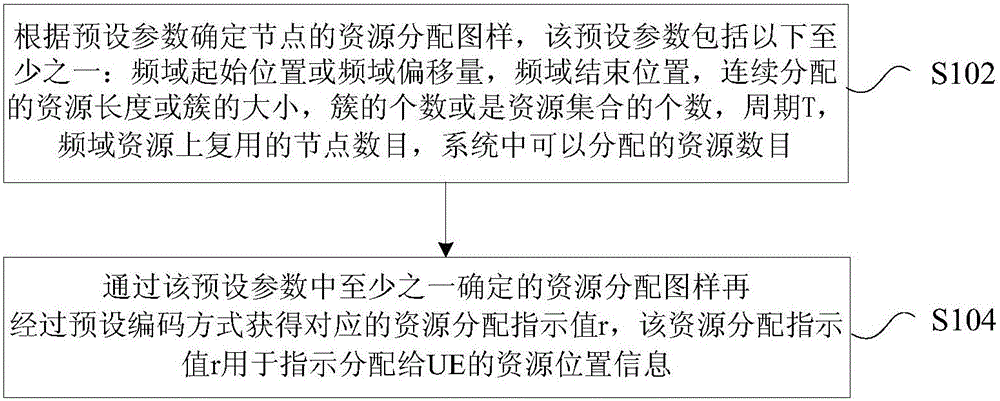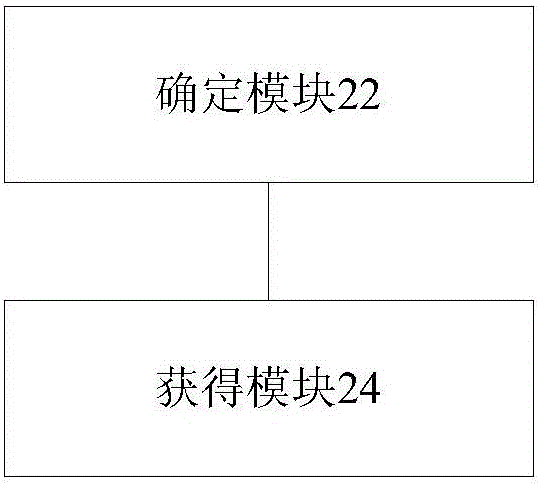Frequency spectrum resource allocation method and device
A spectrum resource allocation and resource allocation technology, applied in the field of spectrum resource allocation methods and devices, can solve the problems of low frequency diversity gain, high overhead, poor resource allocation flexibility, and the like
- Summary
- Abstract
- Description
- Claims
- Application Information
AI Technical Summary
Problems solved by technology
Method used
Image
Examples
Embodiment 1
[0161] This preferred embodiment designs a new and more optimized resource allocation method from the perspectives of improving the flexibility of resource allocation, system performance, and application scenarios, so that the number of multiplexed nodes on the available frequency spectrum is as large as possible, and at the same time Properly increase the number of clusters to bring about frequency diversity gain. At the same time, some corresponding parameters are also introduced, which can reduce overhead and computational complexity to a certain extent.
[0162] The technical problem solved by this preferred embodiment is to provide a spectrum resource allocation method, which can realize that different UEs / UEgroups have their own resource allocation patterns, further reduce overhead and complexity and bring greater frequency diversity gain.
[0163] In order to solve the above problems, this preferred embodiment provides a spectrum resource allocation method,
[0164] Det...
Embodiment 2
[0234] image 3 It is a schematic diagram of resource allocation in the preferred embodiment of the present invention Figure 1 ,Such as image 3 shown. The resource allocation pattern is for a system bandwidth of 5MHz=25 RBs, and a cluster occurrence period T corresponding to the 5MHz system bandwidth is 6RB, or the number of clusters is 5. It should be noted that the corresponding relationship between the system bandwidth and the cycle of cluster appearance or the number of clusters can be specified in advance. In this preferred embodiment, the frequency-domain starting resource index of the default cluster is 0, but the frequency-domain starting resource index number of the cluster is not limited to the default value, and may be a resource in the middle of the frequency-domain resources.
[0235] The realization of the resource allocation pattern is described in detail by the allocation of RBs: Assume that the frequency-domain resource patterns allocated to user 1 or use...
Embodiment 3
[0253] Figure 4 It is a schematic diagram of resource allocation in the preferred embodiment of the present invention Figure II ,Such as Figure 4 As shown, the resource allocation pattern is aimed at a system bandwidth of 5MHz=25 RBs, and a cluster occurrence period T corresponding to the 5MHz system bandwidth is 8RB, or the number of clusters is 3. It should be noted that the corresponding relationship between the system bandwidth and the cycle of cluster appearance or the number of clusters can be specified in advance, and the size of each cluster is 2RB (that is, the size of one RBG). In this embodiment, the frequency-domain starting resource index of the default cluster is 0, but the frequency-domain starting resource index number of the cluster is not limited to the default value, and may be a middle resource in the frequency domain.
[0254] The realization of the resource allocation pattern is described in detail by the allocation of RBs: Assume that the frequency-...
PUM
 Login to View More
Login to View More Abstract
Description
Claims
Application Information
 Login to View More
Login to View More - R&D
- Intellectual Property
- Life Sciences
- Materials
- Tech Scout
- Unparalleled Data Quality
- Higher Quality Content
- 60% Fewer Hallucinations
Browse by: Latest US Patents, China's latest patents, Technical Efficacy Thesaurus, Application Domain, Technology Topic, Popular Technical Reports.
© 2025 PatSnap. All rights reserved.Legal|Privacy policy|Modern Slavery Act Transparency Statement|Sitemap|About US| Contact US: help@patsnap.com



